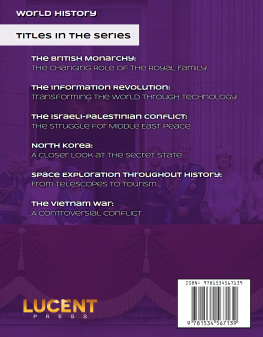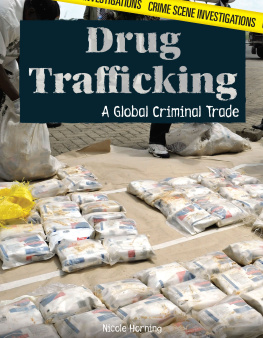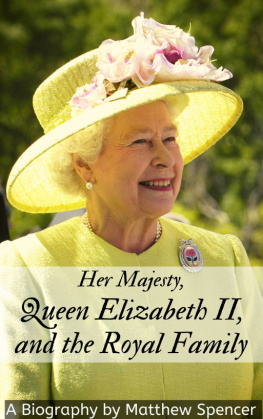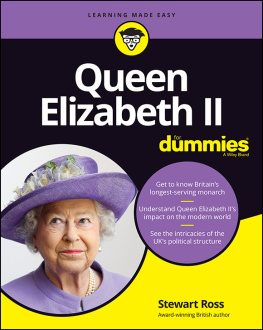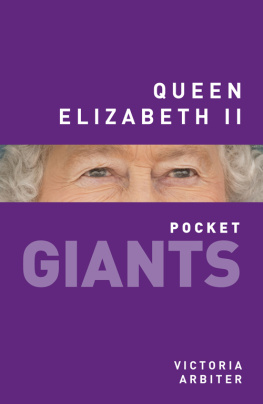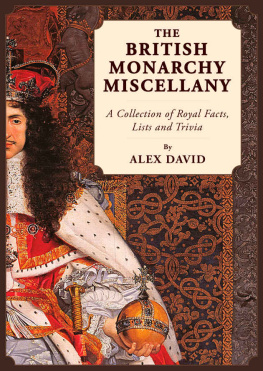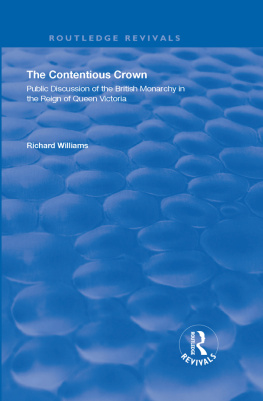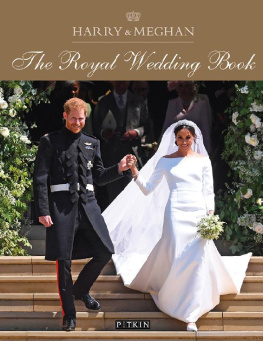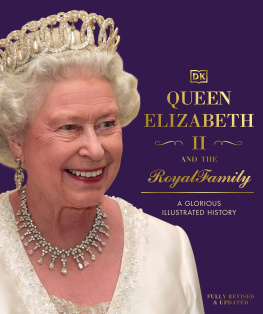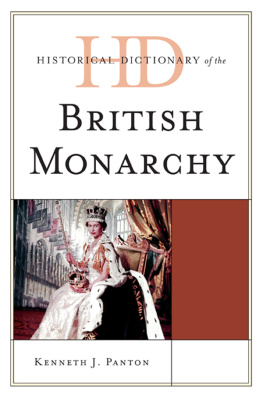
Published in 2020 by
Lucent Press, an Imprint of Greenhaven Publishing, LLC
353 3rd Avenue
Suite 255
New York, NY 10010
Copyright 2020 Greenhaven Press, a part of Gale, Cengage Learning Gale and Greenhaven Press are registered trademarks used herein under license.
All new materials copyright 2020 Lucent Press, an Imprint of Greenhaven Publishing, LLC.
All rights reserved. No part of this book may be reproduced in any form without permission in writing from the publisher, except by a reviewer.
Designer: Deanna Paternostro
Editor: Diane Bailey
Library of Congress Cataloging-in-Publication Data
Names: Horning, Nicole, author.
Title: The British monarchy : the changing role of the royal family / Nicole Horning.
Description: First edtion. | New York: Lucent Press, [2020] | Series: World history | Includes bibliographical references and index.
Identifiers: LCCN 2019001040 (print) | LCCN 2019004527 (ebook) | ISBN 9781534567825 (eBook) | ISBN 9781534567818 (pbk. book) | ISBN 9781534567139 (library bound book)
Subjects: LCSH: Great Britain--Kings and rulers--Biography. | Monarchy--Great Britain--History.
Classification: LCC DA28.1 (ebook) | LCC DA28.1 .H67 2020 (print) | DDC 941.009/9--dc23
LC record available at https://lccn.loc.gov/2019001040
Printed in the United States of America
CPSIA compliance information: Batch #BS19KL: For further information contact Greenhaven Publishing LLC, New York, New York at 1-844-317-7404.
Please visit our website, www.greenhavenpublishing.com. For a free color catalog of all our high-quality books, call toll free 1-844-317-7404 or fax 1-844-317-7405.
Contents
Foreword
H istory books are often filled with names and dateswords and numbers for students to memorize for a test and forget once they move on to another class. However, what history books should be filled with are great stories, because the history of our world is filled with great stories. Love, death, violence, heroism, and betrayal are not just themes found in novels and movie scripts. They are often the driving forces behind major historical events.
When told in a compelling way, fact is often far more interestingand sometimes far more unbelievablethan fiction. World history is filled with more drama than the best television shows, and all of it really happened. As readers discover the incredible truth behind the triumphs and tragedies that have impacted the world since ancient times, they also come to understand that everything is connected. Historical events do not exist in a vacuum. The stories that shaped world history continue to shape the present and will undoubtedly shape the future.
The titles in this series aim to provide readers with a comprehensive understanding of pivotal events in world history. They are written with a focus on providing readers with multiple perspectives to help them develop an appreciation for the complexity of the study of history. There is no set lens through which history must be viewed, and these titles encourage readers to analyze different viewpoints to understand why a historical figure acted the way they did or why a contemporary scholar wrote what they did about a historical event. In this way, readers are able to sharpen their critical-thinking skills and apply those skills in their history classes. Readers are aided in this pursuit by formally documented quotations and annotated bibliographies, which encourage further research and debate.
Many of these quotations come from carefully selected primary sources, including diaries, public records, and contemporary research and writings. These valuable primary sources help readers hear the voices of those who directly experienced historical events, as well as the voices of biographers and historians who provide a unique perspective on familiar topics. Their voices all help history come alive in a vibrant way.
As students read the titles in this series, they are provided with clear context in the form of maps, timelines, and informative text. These elements give them the basic facts they need to fully appreciate the high drama that is history.
The study of history is difficult at timesnot because of all the information that needs to be memorized, but because of the challenging questions it asks us. How could something as horrible as the Holocaust happen? What are the roots of the struggle for peace in the Middle East? Why are some people reluctant to call themselves feminists? The information presented in each title gives readers the tools they need to confront these questions and participate in the debates they inspire.
As we pore over the stories of events and eras that changed the world, we come to understand a simple truth: No one can escape being a part of history. We are not bystanders; we are active participants in the stories that are being created now and will be written about in history books decades and even centuries from now. The titles in this series help readers gain a deeper appreciation for history and a stronger understanding of the connection between the stories of the past and the stories they are part of right now.

Introduction
A SENSE OF TRADITION
T he British monarchy has fascinated people worldwide for years. In 2011, nearly 23 million people in the United States watched the wedding of Prince William Arthur Philip Louis to Catherine (commonly called Kate) Middleton on television. A few years later, in 2018, the wedding of Prince Henry (Harry) Charles Albert David to Meghan Markle drew more than 29 million viewers in the United States alone. Television shows such as The Crown also reflect the popularity of the monarchy.
Being enamored with the people and actions of the British monarchy is not just a recent fad. According to Boston University history professor Arianne Chernock, the American interest in the British monarchy has been alive pretty much since 1776. Pretty much as soon as we severed ties, we were back to being fascinatedcaptivated reallyby the royal family. This interest tends to increase during important and highly publicized events such as the births of children, weddings, funerals, royal visits, and the coronationthe ceremony formally giving the monarch regal powerof a new ruler.
The crowning of Queen Elizabeth II in 1953 was groundbreaking. Her coronation was the first one to be televised, and 27 million people in the United Kingdom (UK) and millions more worldwide watched the event. With this event, Elizabeth was crowned queen of the United Kingdom of Great Britain and Northern Ireland.
Almost 30 years later, in 1981, the wedding of Prince Charles Philip Arthur George to Lady Diana Spencer was one of the most watched events on television in the 1980s. Then, in 1997, when Diana died in a car accident, the entire world mourned. About 30 million people in the United States watched the funeral.

Elizabeth II is Queen of the United Kingdom of Great Britain and Northern Ireland. Great Britain is made up of Scotland, England, and Wales.
The lives of wealthy, powerful people are always of interest to the public, but Americans curiosity about the British monarchy goes deeper than that, according to Jeff Rudski, an assistant professor in the psychology department at Muhlenberg College in Allentown, Pennsylvania. He said,
Next page
